Unloved fusilli and its friends
- rosemary
- Jun 4
- 7 min read
"three small wings elegantly twisted on themselves, in a spiral movement." Barilla

I had a feeling that fusilli, those short spiralised pieces of pasta were somehow downmarket. Somehow you never seem to see celebrity chefs, and gourmet Italian chefs, using them. They seem to go for strings like spaghetti, fettucine et al. or else for rigotini and friends. Do they regard them as below consideration, food of the poor that has not yet become fashionable? The food of the common people - and children? And yet, fusilli are one of the shapes that are always on the supermarket shelves - including the home brand varieties. So today having decided to try and clear out my email Inbox, I came across this statement by Rachel Roddy from an old Guardian newsletter:
"arguably the most accommodating shape of them all, because it catches just about any sauce or condiment you give it."
Which made me decide to write about fusilli - and of course this morphed into a rambling contemplation of a particular shape, which eventually, as with all things really, evolved from one, through several close cousins, to some more remote. Where to stop in the family tree is always the question. I think I drew it just before macaroni.

reddit told me that I was not alone in thinking that fusilli was underrated and was somehow losing out in the war with rigatoni - in the foodies' eyes anyway. Not apparently in the views of the common man - expressed by wolfsbane_and_cream in his or her praise of the shape:
"Fusilli is way underrated and should be shown more love. I hardly ever see it being used by popular chefs and home cooks, which is a shame. Without waxing overly poetic, these are some reasons it’s amazing:
· It’s thick and dense, making it harder to overcook. I like my pasta cooked just past al dente but still shy of overcooked. Fusilli is the most forgiving variation of pasta with regard to getting it cooked just right. here, here!
· Sauce sticks to and gets stuck in all those lovely nooks and crannies. Plus it’s better at picking up ground meat, chicken and vegetables than most other varieties.
· Its amazing hot or cold. 9/10 times I’ll pick Fusilli over elbow macaroni when making a Hawaiian Mac Salad (despite elbows being tradish). It pairs great with cold mayo, warm Bolognese and pesto at any temperature.
· Curvy, thick and chunky – even a small serving works better at sating my carb cravings. Also, it works so well with cheese (I’m looking at you Kraft mac).
· Kids love it! It’s easy to stab with a blunt fork and scoop with a spoon. Plus it’s not long (no slurping required) and doesn’t splash if you bite into it.
· I’ve never seen it go out of stock at major supermarkets, and it's budget friendly (move over student ramen).
Yes I know that's a long quote, but it sort of says what I was going to say why this particular shape should be more promoted by the cognoscenti. Not that I approve necessarily of a Hawaiian Mac Salad, or Kraft mac. Moreover according to Rachel Roddy - a cognoscenti - it's the third most popular shape in Italy, and judging by the aforesaid 'never out of stock at major supermarkets' it's very popular here too. I have no answer to why the celebrity crowd do not regularly use it in their recipes. Is it less photogenic? Surely that's just down to the skill of the photographer.

My rambles began with Rachel Roddy and her An A-Z of Pasta, in which she recounted the history of this shape which dates way back in time to around the time the Arabs and Normans were sharing Sicily - around 1100 AD. Initially there were no machines to spit out perfectly coiled bits of pasta and so you had to do it by hand. A strip of a particular reed - a busa - was used to shape thin ropes of pasta around the reeds - busiate were born.

You can watch a video in the Pasta Grannies series in which one of the Pasta grannies shows you how to do it - Pasta Grannies making busiate finishing by making this dish of Busiate with Trapanese pesto - a pesto which adds tomatoes to the basil and pine nuts version we all know and love. In Sicily it is also often made with flour from various ancient Sicilian heritage grains.
If you don't want to watch the video - see the pictures below. These are handmade, and so every individual's busiate will look different. Yes, this form of pasta is called busiate - and of course is much more fashionable for the foodies.
It was a long time however before machine production of fusilli was perfected - and not in Italy, but in America, by the Taviani Brothers in 1924. In America it seems they have a very similar pasta called rotini - apparently more popular than fusilli, but truth to tell I cannot tell the difference, other than, perhaps one is a looser coil than the other. Some seem to think they are the same thing.
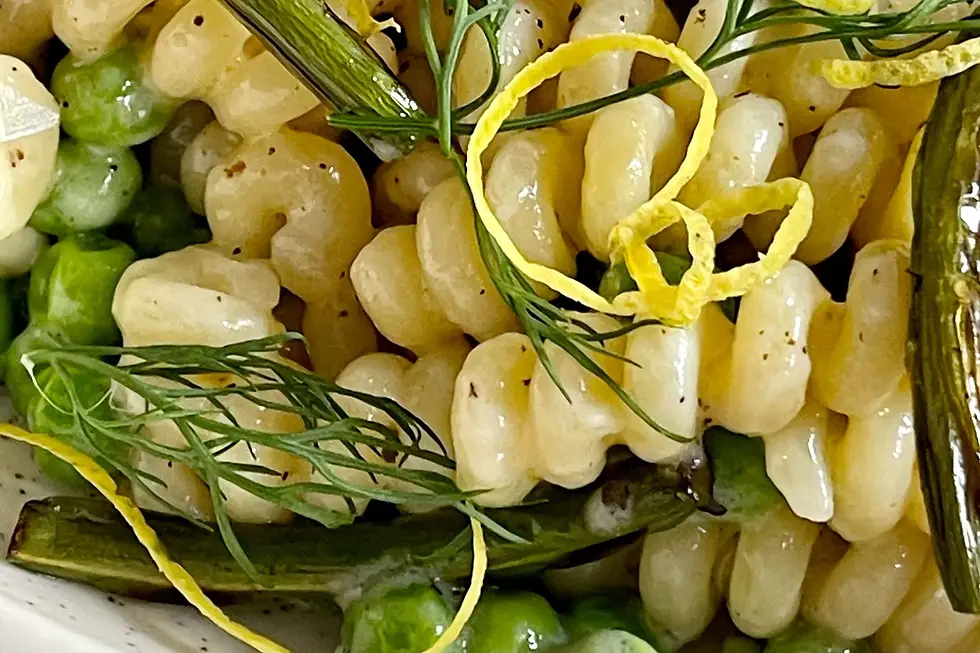
The search for the perfect fusilli kind of shape goes on and here I mention more curlier types, the first of which is fusilli corti bucati:
"Where fusilli and rotini have flat blades like a corkscrew, fusilli corti bucati is all curves — a short, smooth coil that, like bucatini, is made out of a hollow tube. ... it has an added element: fun" Bettina Makalintal/Eater
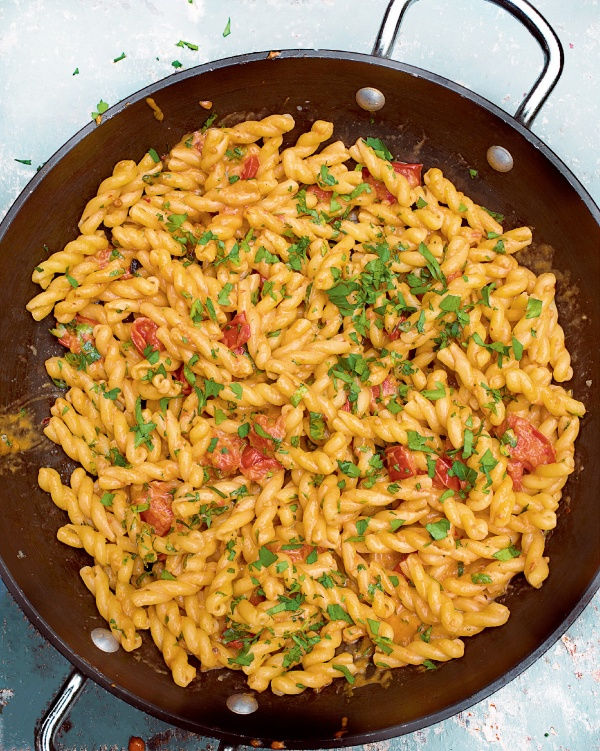
The second is gemelli, which is similar but looks as if two lengths of pasta are coiled around each other. What you actually have here is a strip of pasta, folded in half rolled then twisted around itself. The name gemelli, which means 'twins' confuses, and it also looks as if some people seem to think that they are hollow like the fusilli corti bucatini, but not so. It's an old form of pasta, however, emanating from southern Puglia. The dish shown here is from Nigella Lawson - Gemelli with anchovies, tomatoes and mascarpone.
Third? Trofie. Trofie are very similar, but look less like two strands twisted around each other. It's another thin roll, twisted but less so. Two examples - Miso pesto trofie pasta with spinach and pine nuts from Ottolenghi and Trofie with pesto alla genovese, potatoes and green beans from Rachel Roddy - something new, something old - with a magic potatoe thrown in and all cooked in the same pot.

And fourth - casarecce - a folded over roll that is not quite enclosed? As an example here I have chosen Rachel Roddy's Casarecce with lamb and saffron ragu. In her book An A-Z of Pasta she also seemed to think that a lamb ragu was the right choice for fusilli itself, but I could not find that recipe online.
People are still trying to dream up new pasta shapes, and in this part of the massive pasta family there are two modern examples.

The first is cascatelli, invented in America by Dan Pashman:
"The result of many rounds of designing, engineering, and trial and error, the final product resembles an oversized comma with ruffles on either side of a curved half-tube. It’s supposed to maximize three core qualities: “sauceability” (how well sauce adheres to it), “forkability” (how easily it stays on the fork), and “toothsinkability” (how satisfying it is to sink one’s teeth into it)." (cascatelli) - Jenny G. Zhang/Eater

Not very available as yet, and not a lot of recipes either. The second is radiatori - named after the radiator, which is a rather complicated shape, but with lots of crevices in which to trap the sauce, which I guess is the aim. Also not widely available as yet.
Then I remembered a curly kind of fusilli that I had enjoyed some time recently although I could not remember what it was called. So I looked and found gigli which indeed were curly and obviously originating from a flat piece of pasta - sort of curled and twisted, for which I found a recipe from Ottolenghi. Gigli with chickpeas and za'atar
But no it wasn't quite what I was looking for so I searched some and found cavatappi - yes indeed - a larger tube but twisty with the feeling of fusilli - Cavatappi with peas, pancetta and goat's cheese - DeLallo, which is when I realised that I was now straying into macaroni which is a whole other thing is it not? Such is evolution. You start out with amoeba and end up with man.
So I stopped my search for fusilli's parents, and siblings, found I had strayed into distant cousins and went back to finding who in the celebrity cook world actually used fusilli. After all this was supposed to be about fusilli. So here are some things to try: from Nigella's Pasta with cavolo nero and 'nduja or her Sicilian pasta with tomatoes, garlic and almonds; Jamie and two sausage pastas - Spicy sausage fusilli and Wild garlic and sausage fusilli. Then there is Nagi Maehashi of Recipe Tin Eats, who had several recipes, but I chose Whipped ricotta one-pot pasta with sun-dried tomatoes; Fusilli with leek, potato, Parmesan and hazelnuts - Rachel Roddy - Fusilli with leek, potato, Parmesan and and hazelnuts; Rosetta sprouts, anchovy, chilli and pine nut pasta - Thomasina Miers/The Guardian and finally a salad, because fusilli seems to be the pasta shape of choice for salads - from pasta company DeLallo Fusilli Pasta Salad with Olives, Pepper Drops, and Dijon Vinaigrette
Hope you can find something for your pasta dinner this week from that lot.
YEARS GONE BY
June 4
2022 - Duxelles - a first recipe
2021 - Something Persian
2020 - Deleted
2018 - A bag of olives - help!
2017 - Nothing


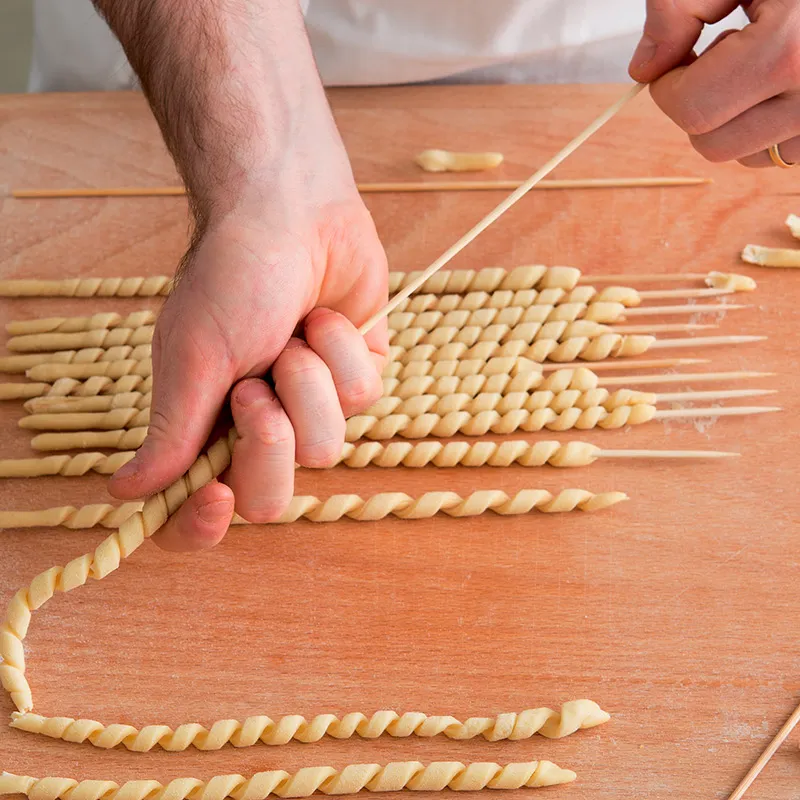












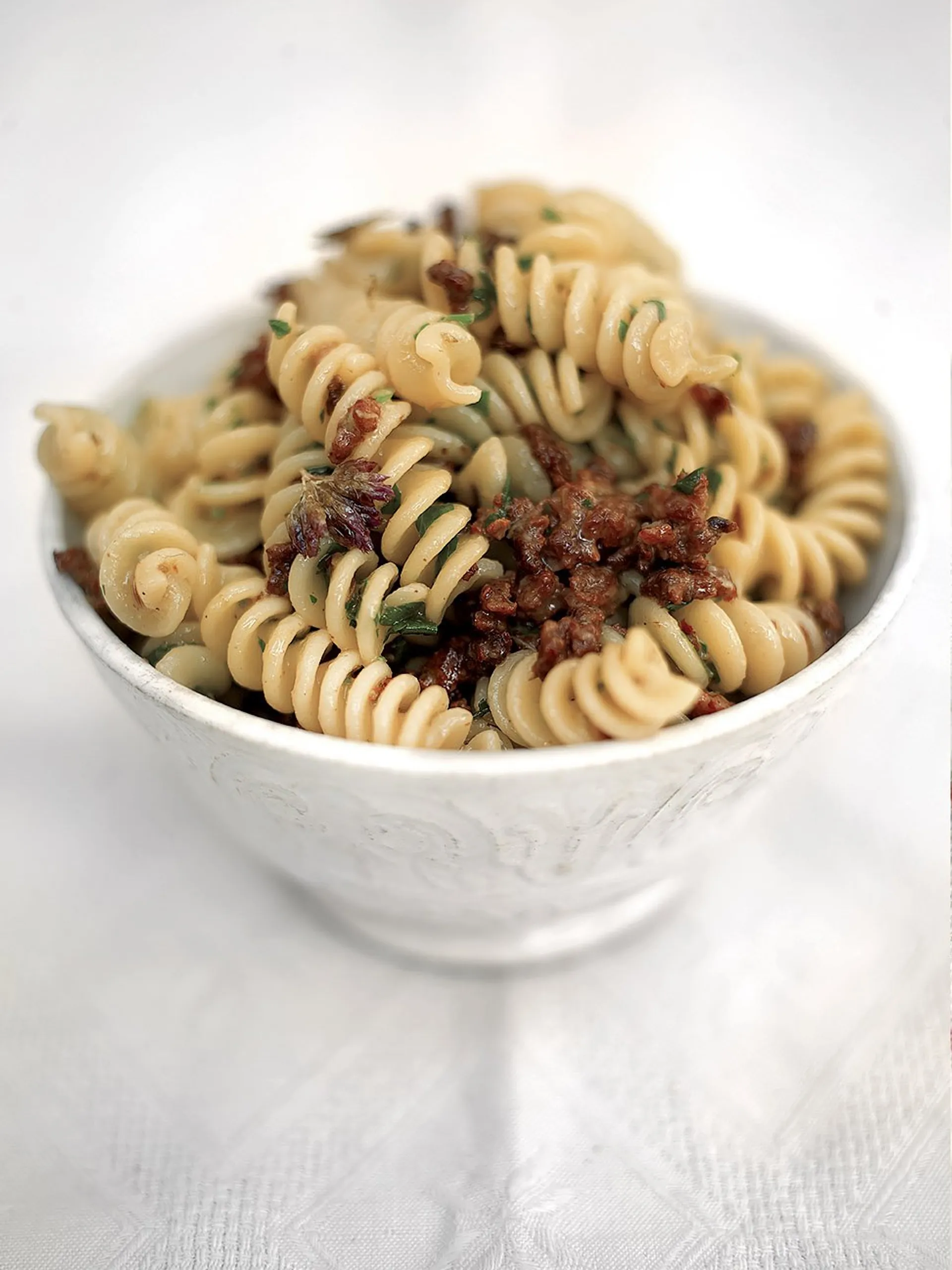

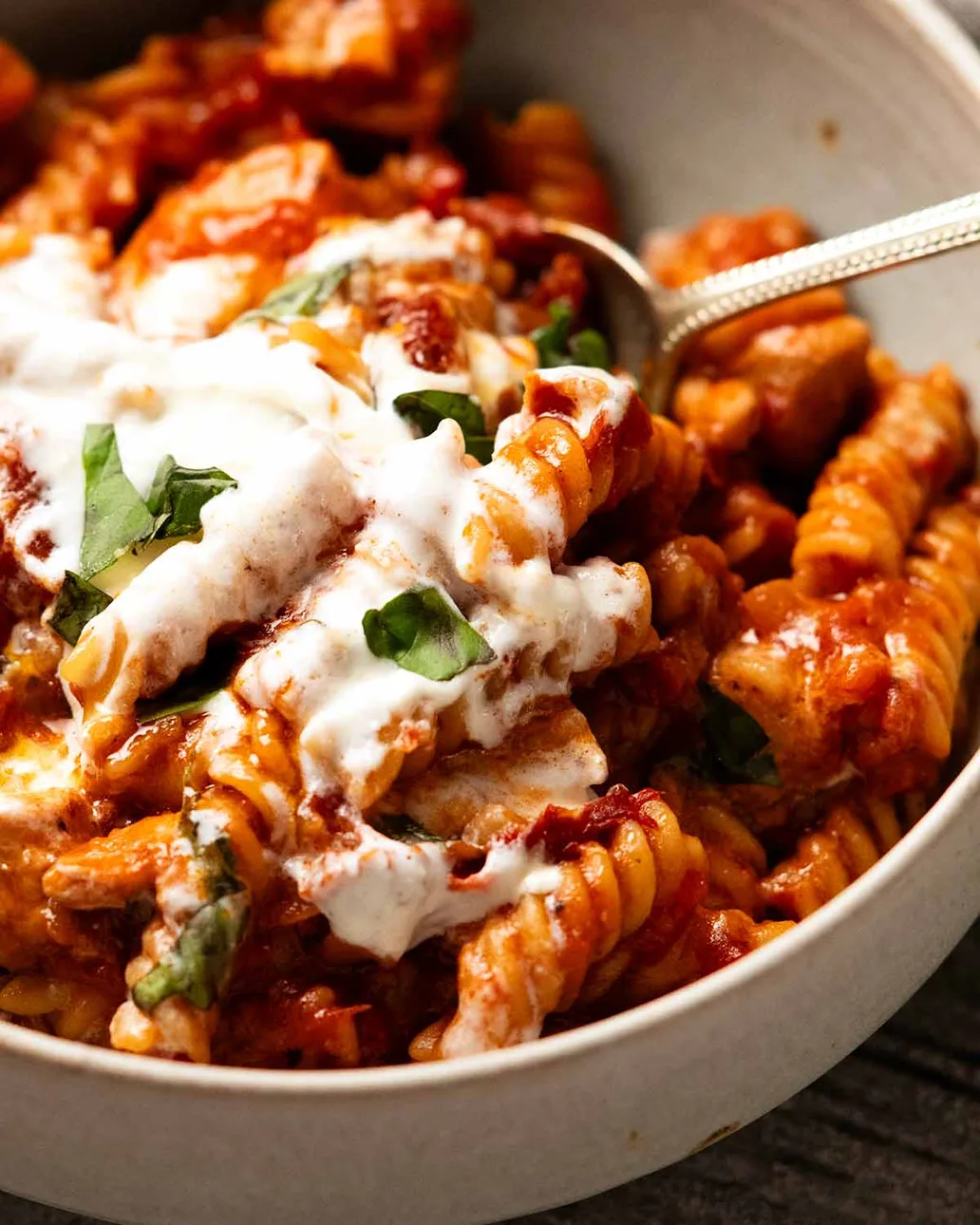




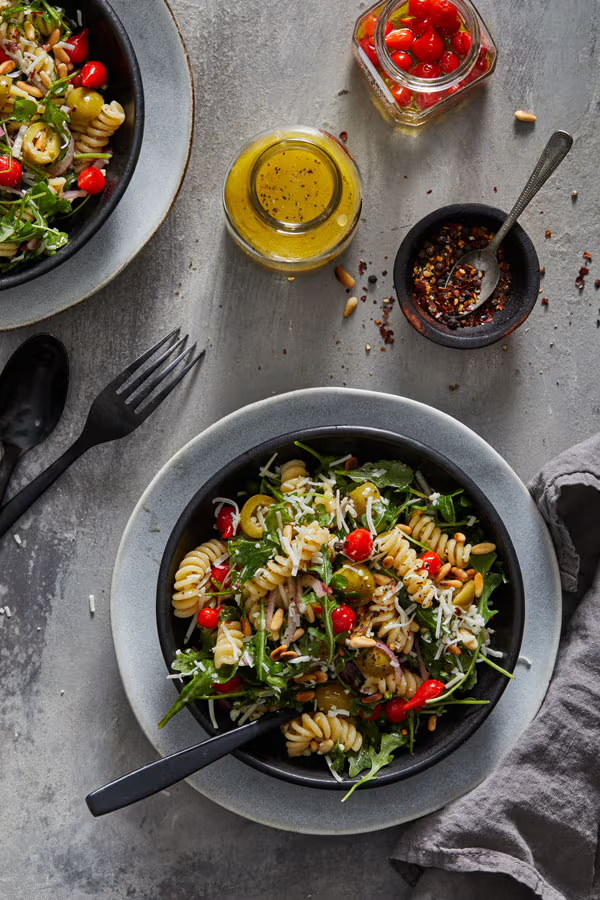



Comments